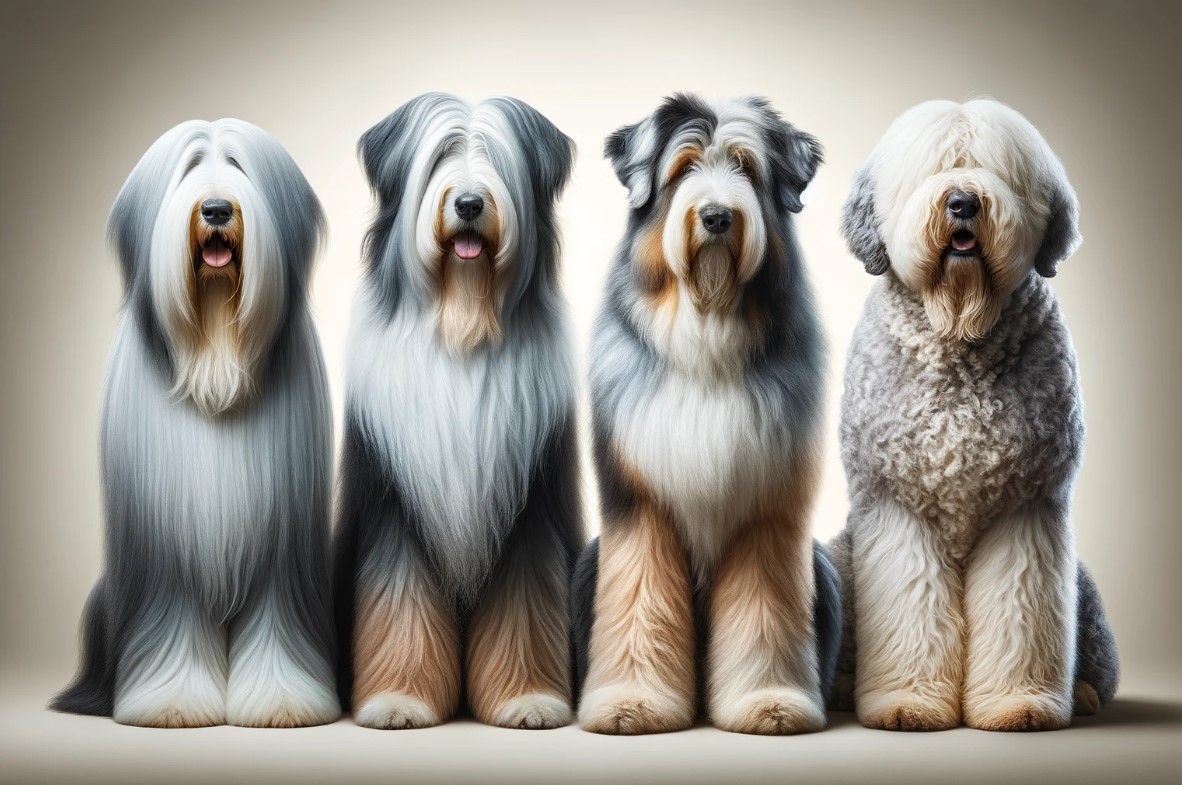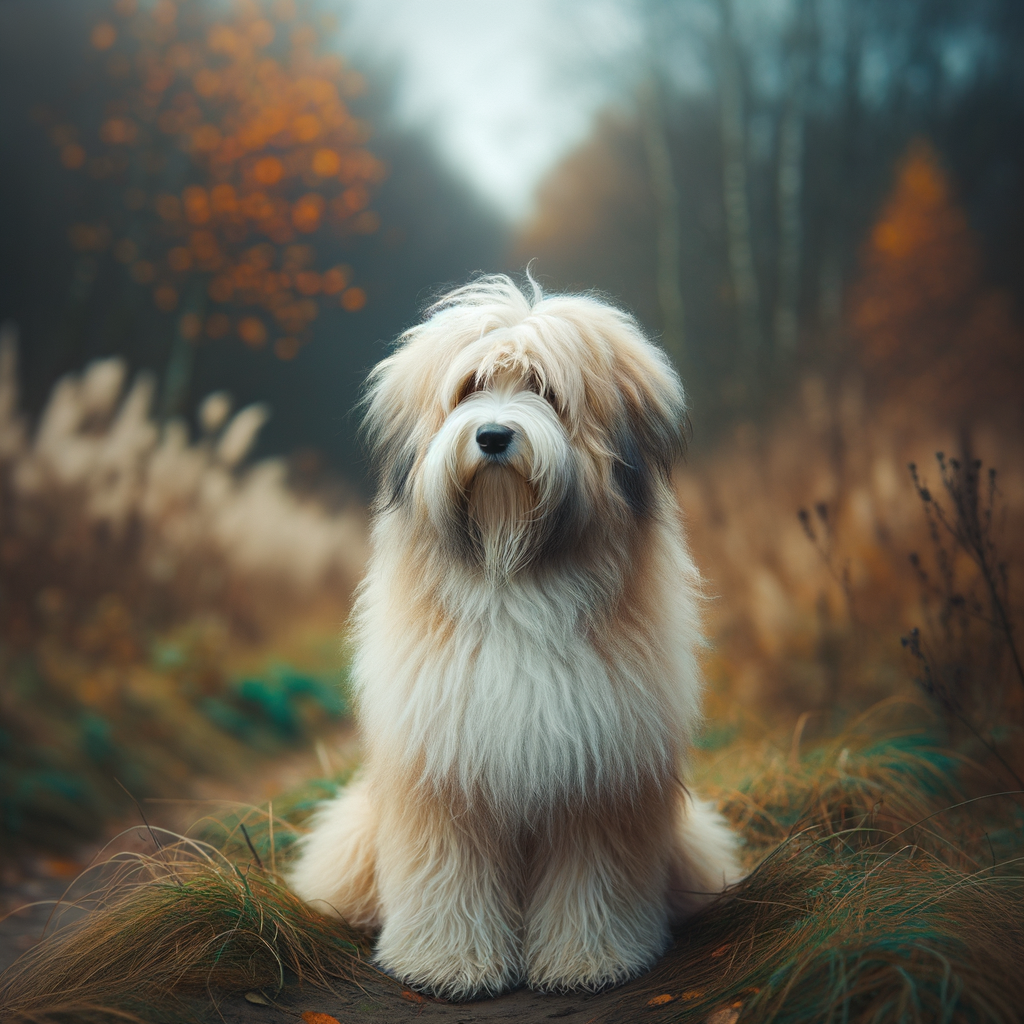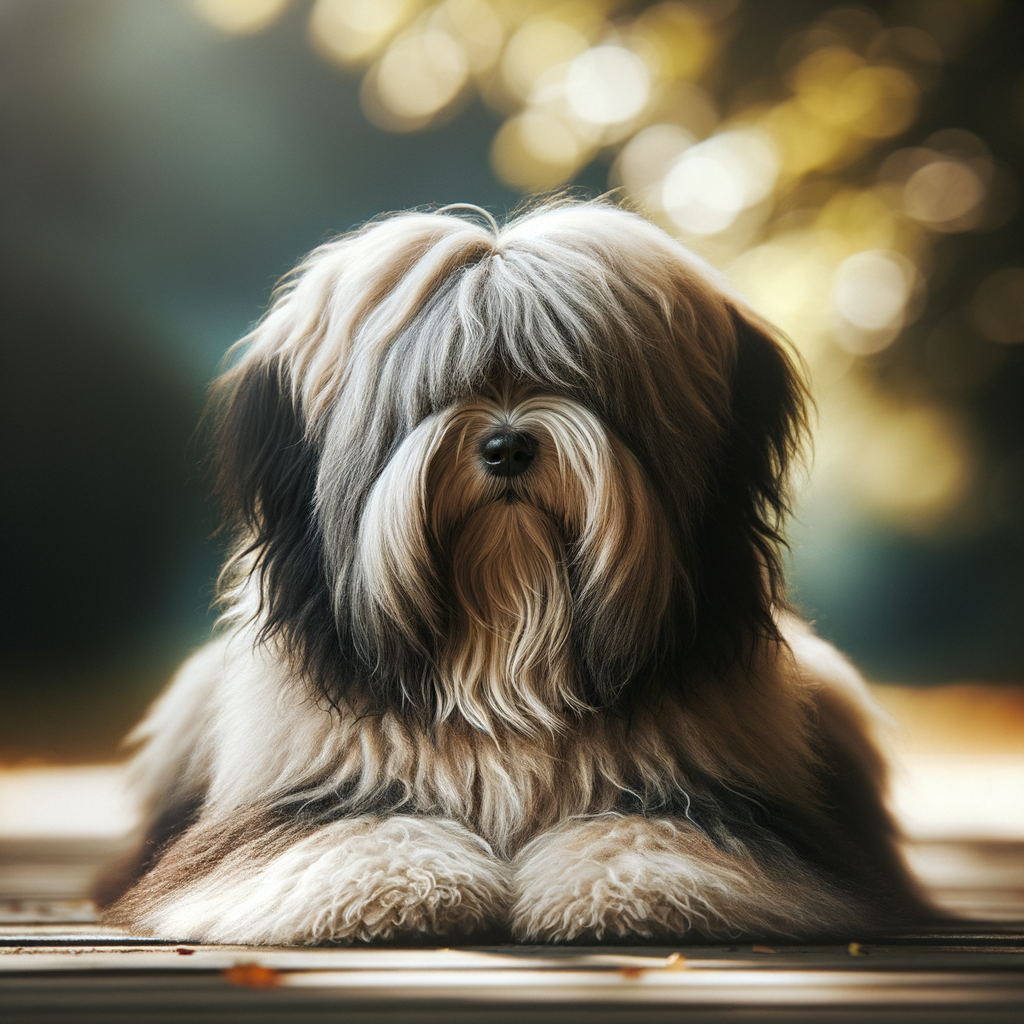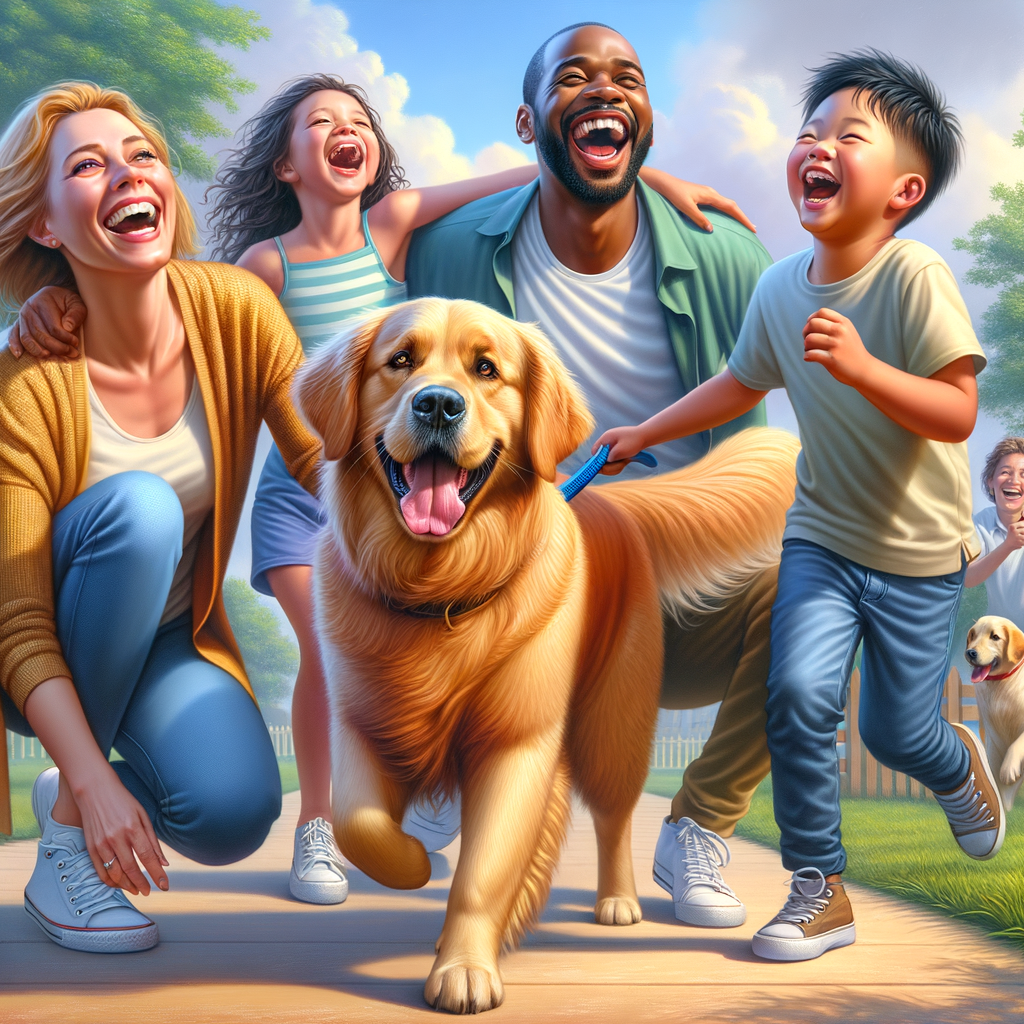As a holistic veterinarian and a dog lover, I’ve always had a soft spot for the shaggy dog breeds. Their fluffy coats, charmingly disheveled looks, and often playful personalities make them hard to resist. If you’re considering bringing one of these tousled-tailed companions into your home, buckle up for a journey into the world of shaggy dog breeds!

Shaggy dog breeds are characterized by their long, thick, and often wavy or curly coats. This gives them their distinctive “shaggy” appearance, akin to a mop or a tousled head of hair. Each breed has its own unique traits, from the elegant Old English Sheepdog with its bear-like figure to the small but sturdy Shih Tzu with its luxurious locks. But one thing ties them all together – an abundance of hair that requires regular care and grooming.
When it comes to popularity, some shaggy dog breeds have become household names. Who hasn’t heard of the lovable and intelligent Bearded Collie or the fun-loving and loyal Afghan Hound? But there are also lesser-known breeds worth exploring, like the Bergamasco Shepherd with its uniquely matted coat, or the Otterhound, a rare but delightful breed with a ruggedly handsome look.
No matter the size preference, there’s a shaggy breed for everyone. From small breeds like the Lhasa Apso and the Bichon Frise, to large breeds like the Newfoundland and the Briard, these dogs come in all shapes and sizes. But remember, all that fluff can sometimes be deceiving! What appears to be a large dog might just be a medium-sized dog with a lot of hair.
Though their coats might be high-maintenance, the love and companionship these breeds provide make every grooming session worth it. Just bear in mind that some breeds might have specific health considerations due to their coat types, but as long as you stay attentive and regular with their check-ups, these dogs can lead happy, healthy lives.
Whether you’re a family with kids, live alone, or have other pets, there’s a shaggy breed out there for you. So, are you ready to embrace the charm of the shaggy dog breeds and welcome a new, fluffy member into your family? Dive in, and discover the joy of the tousled tails.
Understanding Shaggy Dog Breeds
Ever gazed at a shaggy dog and wondered why it looks so delightfully disheveled? Well, it’s time to dive into the wonderful world of shaggy dog breeds and unravel the mystery behind their unruly locks!
What Defines a Shaggy Dog Breed
First off, let’s define what “shaggy” really means in the canine world. Predominantly, a shaggy dog breed is one that has a long, thick coat which lends it a tousled or unkempt appearance. Often, their fur is rough or wiry to touch and may form natural waves or curls. Breeds such as the Old English Sheepdog, Komondor, and the Bearded Collie are classic examples of shaggy dogs with their distinctive, mop-like coats.
But let’s not confine shagginess to just the coat. Many shaggy dog breeds have bushy eyebrows, long eyelashes, and a profusion of facial hair that often covers their eyes. Their long ear hair and tufted tails further contribute to their shaggy charm.
The Unique Traits of Shaggy Dog Breeds
Shaggy dog breeds aren’t just about their coats. There’s so much more to them than meets the eye. Here’s what sets these breeds apart:
– Distinctive Appearance: Shaggy dogs often stand out in a crowd due to their unique, rustic appearance. Their abundant fur creates an impression of size and strength, which can be quite intimidating. At the same time, their covered eyes give them a mysterious and endearing look that’s hard to resist.
– Weather-Resistant Coats: A shaggy coat isn’t just for show. In many cases, it serves a practical purpose too. The dense, double-layered coats of many shaggy breeds act as a natural insulation against extreme weather. This makes them ideal for outdoor work, particularly in colder climates.
– Breed History: Many shaggy dog breeds were historically working dogs, bred for tasks that required strength, endurance, and resilience. Their shaggy coats were an asset, protecting them from harsh weather and rough terrains.
– Personality Traits: Shaggy dog breeds often have distinct personality traits. Many are known for their intelligence, agility, and hardworking nature. They also tend to be loyal and protective, making them excellent family pets.
– Variety: From small breeds like Shih Tzus to the large and imposing Bouvier des Flandres, there’s a shaggy dog breed to suit every preference. Whether you prefer a lap dog or a herding dog, you’re sure to find a shaggy breed that fits your lifestyle.
Learning about shaggy dog breeds helps you appreciate their unique charm and understand their specific needs. These breeds aren’t just about luscious locks and adorable looks; they carry a rich history and distinctive traits that make them truly special.
So, if you’re considering bringing home a shaggy pup, remember that you’re choosing a companion with a unique personality, a fascinating history, and a coat that’s more than just a style statement. And that, my friend, is the real beauty of shaggy dog breeds!

The Most Popular Shaggy Dog Breeds
When you think of shaggy dog breeds, a few favorites likely come to mind. These are the breeds that have gained popularity due to their fluffy coats and charming personalities.
First, there’s the Old English Sheepdog. Known for their thick, grey and white coats, these dogs are as friendly and intelligent as they are shaggy. They are large dogs, often weighing up to 100 pounds, and require plenty of exercise.
Secondly, the Bearded Collie. This breed boasts a long, shaggy coat and a playful personality. They are medium-sized dogs, perfect for families with kids due to their friendly and adaptable nature.
The Komondor, also known as the “mop dog,” is another popular shaggy breed. With their long, corded coats, Komondors are instantly recognizable. They’re large and protective, making them excellent guard dogs.
Finally, the Afghan Hound stands out among shaggy dog breeds due to their elegant appearance and dramatic silky coats. These dogs are not just beautiful; they are also fast and agile, originally bred for hunting in the rough terrains of Afghanistan.
Lesser-Known Shaggy Dog Breeds
While the above breeds are quite well-known, there are also several lesser-known shaggy dog breeds worth considering if you’re looking for a furry companion.
The Bergamasco Shepherd, for instance, has a unique coat that forms ‘flocks’ or loose mats, giving it a shaggy appearance. They are intelligent, patient, and have a strong guarding instinct.
The Otterhound is another lesser-known breed. They have a dense, rough coat that can come in any color. These dogs are friendly and affectionate, with a keen sense of smell.
Lastly, consider the Polish Lowland Sheepdog. This breed is known for their long, thick shaggy coat and their lively, intelligent disposition. They are small but sturdy dogs, great for active families.
While the charm of these breeds lies in their tousled tails and shaggy coats, remember that each breed has its unique traits and needs. Whether you’re drawn to the popularity of the Old English Sheepdog or the uniqueness of the Bergamasco Shepherd, make sure to consider their character and care needs as well to ensure a perfect match.
Comprehensive List of Shaggy Dog Breeds
Now that we’ve established the allure of shaggy dogs, let’s dive into a detailed list of such breeds. They come in all sizes, from petite to enormous, each with its unique character and charm.
Small Shaggy Dog Breeds
If you’re looking for a small, shaggy companion, you’re in luck. There’s a wide range of adorable small dog breeds that sport a lot of hair. Here are a handful of notable ones:
- Shih Tzu: These affectionate and outgoing dogs sport long, flowing locks that require regular grooming.
- Lhasa Apso: Known for their dense, long coats, these dogs are perfect for those who want a small but sturdy canine companion.
- Cairn Terrier: Featured in the classic film “The Wizard of Oz,” these dogs are known for their rough, shaggy coats and playful nature.
- Maltese: With their majestic, silky white coats, these small dogs are often a favorite for those looking for a small, elegant shaggy dog.
- Havanese: This breed, native to Cuba, has a fluffy double coat and a love for play, making them a great option for families.
Large Shaggy Dog Breeds
If you’re looking for a bigger, shaggy pooch, you’re not short of options either. Check out these popular large shaggy dog breeds:
- Old English Sheepdog: Known for their shaggy grey and white fur, these dogs are intelligent and adaptable, making perfect companions for active families.
- Afghan Hound: These elegant dogs are known for their long, flowing coats and aloof demeanors. Their hair requires regular grooming, but their stunning appearance makes it all worth it.
- Bearded Collie: With their long, shaggy fur and bright eyes hidden beneath a mass of hair, these dogs have a playful and friendly nature that matches their humorous appearance.
- Briard: A French breed, the Briard is a large, long-haired dog known for its intelligence and loyalty.
- Newfoundland: With their massive size and thick, shaggy coats, these dogs are gentle giants, known for their loving and patient nature.
Whether you’re looking for a small lapdog or a large family pet, the world of shaggy dog breeds is extensive and diverse. These dogs, with their charming tousled tails, will certainly add joy and warmth to your home, each with their unique personalities and characteristics. Just remember that these breeds require more grooming and maintenance due to their long hair, but that’s a small price to pay for the love and companionship they offer.
Grooming Needs of Shaggy Dogs
When it comes to shaggy dog breeds, one of the first things that come to mind is their grooming needs. Owners of these fluffy companions often find themselves spending a lot of time maintaining their pet’s coat.
Most shaggy dogs have double coats, which means they have a dense undercoat beneath their longer outer coat. This type of coat requires regular brushing to prevent matting and tangling. Depending on the breed, you may need to brush your shaggy dog daily or at least several times a week.
Here are some grooming essentials for shaggy dogs:
- Brushes and Combs: You’ll need a slicker brush to remove loose hair and a rake to reach the undercoat. A comb can help tease out any tangles or mats.
- Shampoo and Conditioner: Choose products designed for long-haired breeds. They help keep the coat shiny and manageable.
- Grooming Clippers: Some shaggy dogs may need occasional trimming, especially around the eyes, ears, and paws.
- Professional Grooming: Depending on the breed, you may need to take your shaggy dog to a professional groomer for a haircut every few months.

Health Considerations for Shaggy Dog Breeds
While shaggy dogs are undeniably adorable, it’s important to understand that their long, fluffy coats can also present some health challenges.
One of the main health considerations for shaggy dogs is the risk of skin problems. Their dense coats can create a warm, humid environment that’s ideal for the growth of yeast and bacteria. Regular grooming and bathing can help prevent these issues, but it’s also important to check your dog’s skin regularly for any signs of redness, inflammation, or unusual odors.
Shaggy dogs are also more prone to ear infections due to their long hair blocking air circulation in the ear canal. Regular ear checks and cleaning can help prevent these infections.
Another health consideration is the risk of overheating. Shaggy dogs are generally better suited to cooler climates due to their thick coats. In hot weather, they can easily overheat, especially if they’re exercising or spending time outdoors. It’s crucial to provide plenty of water and shade for your shaggy dog in warm weather, and never leave them in a hot car.
Finally, some shaggy dog breeds are prone to certain genetic health conditions. For example, Old English Sheepdogs can suffer from hip dysplasia, while Bearded Collies are prone to eye problems. Regular vet check-ups can help detect these conditions early and ensure your shaggy companion stays healthy.
In conclusion, owning a shaggy dog breed can be a rewarding experience, but it’s important to be prepared for the grooming and health care needs that come with these fluffy companions.
Training Shaggy Dog Breeds
Training your shaggy canine companion can be a joyous journey or a frustrating task, depending on your approach. Shaggy dogs, with their tousled fur and playful dispositions, have some unique characteristics that can make the training process a bit different. Let’s delve into some effective ways to train these breeds and address common challenges you might face.
Training Tips for Shaggy Dog Breeds
When it comes to training shaggy dog breeds, patience and consistency are key. Here are some helpful tips:
– Start Early: If possible, begin training when your furry friend is a puppy. This is when they are most receptive to learning new commands and tricks.
– Use Positive Reinforcement: Shaggy dog breeds respond well to positive reinforcement methods. This includes giving them treats, praise, or physical affection for good behavior.
– Stay Consistent: Consistency in commands and rewards helps your dog understand what is expected of them. If you reward your pet for sitting sometimes and not other times, they may get confused.
– Train Regularly: Regular training sessions – even just 10-15 minutes a day – can make a huge difference. It keeps their learning fresh in their minds.
– Be Patient: Shaggy dogs can be a bit stubborn at times. Keep cool and carry on, even if progress seems slow.
Common Challenges in Training Shaggy Dogs
Training shaggy dog breeds comes with its own set of challenges. They are usually intelligent and independent, which can sometimes be misconstrued as stubbornness. Here are some common issues you might encounter:
– Distraction Due to Coat: Shaggy dogs have long, fluffy coats which can get into their eyes, leading to distraction during training sessions. Regular grooming can help manage this issue.
– High Energy Levels: Shaggy breeds often have high energy levels. They may lose focus if they don’t get enough exercise before training sessions. Try to ensure they get ample physical activity to burn off some energy.
– Stubbornness: If your shaggy dog is resistant to training, try to understand why. Are they bored? Maybe the training sessions are too long, or they need a change in the reinforcement used.
In the end, remember that every dog, shaggy or not, has its own pace of learning. It’s important to respect that and adapt accordingly. Training your shaggy dog can be a rewarding process, resulting in a well-behaved furry pal who loves to follow your commands.

Shaggy Dog Breeds for Families
When it comes to choosing the perfect furry addition to your family, shaggy dog breeds shine with distinct characteristics that make them stand out. Whether you have kids or other pets at home, there’s a shaggy pooch perfect for you.
Best Shaggy Dog Breeds for Families with Kids
Children and dogs have a special bond. Their shared spirit of adventure, love for play, and instinctive affection make them a match made in heaven. For families with kids, some shaggy dog breeds stand out more than others.
– The Bearded Collie is a lively and playful breed. With their long, shaggy fur and contagious energy, they can match the enthusiasm of the most energetic kids.
– Old English Sheepdogs are known for their protective nature. Their gentleness makes them perfect companions for kids. They’re also very tolerant, making them great for younger children who are still learning how to interact with dogs.
– Then there’s the Shih Tzu. With their adorable faces peeking out from beneath their shaggy fur, they are an absolute hit with kids. These dogs are friendly, outgoing, and adaptable.
Best Shaggy Dog Breeds for Families with Other Pets
Integrating a new pet into a home with other animals can be a bit of a challenge. However, some shaggy dog breeds are known for their compatibility with other pets.
– Briards are not just good with kids but also with other pets. They’re sociable and have a friendly demeanor, making them a great addition to multi-pet households.
– The Afghan Hound is another breed that generally does well with other pets. They’re independent yet gentle, often enjoying the company of other animals.
– Lastly, Labradoodles are also known for their compatibility with other pets. Their friendly and outgoing nature makes them easy to introduce to other animals.
Choosing the right shaggy dog breed for your family depends on various factors like your home environment, the age of your kids, and the nature of your existing pets. Always spend time with a breed before bringing them into your home to ensure it’s a good fit.
Remember, every dog breed, shaggy or not, has its unique set of characteristics and needs. The most important thing is that they’re given plenty of love, attention, and proper care to thrive in their new family.
Embracing the Love of Shaggy Dog Breeds
As we wrap up our exploration into the world of shaggy dog breeds, one thing is clear: a shaggy dog isn’t just a pet; it’s a lifestyle, an adventure, and a whole lot of love bundled in their shaggy coats. These loveable creatures, with their unique charm and personality, can truly make a house feel like a home. Their endearing quirks, coupled with their lovable nature, make them a fantastic addition to any family, big or small.
Shaggy dog breeds, whether big or small, are known for their heartwarming charm and their joyous spirit. They’re not only great companions but also, they can be your child’s best friend, your walking buddy, or simply a fluff of sunshine on a gloomy day. They come with a range of personalities and temperaments, from the energetic and playful, like the Old English Sheepdog, to the calm and gentle, like the Bichon Frise. The one thing they all have in common is their ability to fill your life with joy, amusement, and endless cuddles.
Final Thoughts on Choosing a Shaggy Dog Breed
Choosing a dog breed, especially a shaggy one, should not solely be about their adorable looks. It’s important to consider factors such as their care needs, health considerations, and training requirements. A shaggy dog breed might require more grooming, but they also come with an abundance of love and loyalty. Furthermore, each breed has its unique health concerns, which need to be taken into account when making that final decision.
Training a shaggy dog breed could be a fun and rewarding experience, as long as you approach it with patience, consistency, and lots of treats! Though they might present some unique challenges, the bond you build with your shaggy friend during this process is priceless.
Selecting a shaggy dog breed for a family with kids or other pets requires careful thought. Some breeds may be more suitable for families with young children, while others might get along better with other pets. It’s always best to do thorough research or consult with a professional to ensure a harmonious fit for everyone involved.
After all, bringing a shaggy dog breed into your home is a long-term commitment, one filled with endless love, joy, and yes, a lot of fur. But one look at their adorable, shaggy faces, and one nudge from their fluffy tails, it quickly becomes apparent that it’s all worth it. Their unique charm, their unconditional love, and their overwhelming loyalty make these breeds more than just pets; they become a part of your family, a bunch of fluffy, shaggy love that fills your home and heart.
So, as you embark on this journey of embracing a shaggy dog breed, remember that it’s not about the size of the breed or the length of the fur, but the size of the heart that lies beneath it. Love them, care for them, and in return, they’ll reward you with a lifetime of happiness and endless wagging of those charming, tousled tails.
Frequently Asked Questions
Q1: What are some common shaggy dog breeds?
A: Some common shaggy dog breeds include the Old English Sheepdog, Bearded Collie, and the Bouvier des Flandres.
Q2: How often should I groom my shaggy dog?
A: Shaggy dogs typically require regular grooming to prevent their hair from matting. This could be as often as every week, depending on the breed and the individual dog’s coat.
Q3: Are shaggy dogs hypoallergenic?
A: Not all shaggy dogs are hypoallergenic. Some breeds, like the Shih Tzu and the Bichon Frise, are considered hypoallergenic, but others are not. Always research the specific breed if allergies are a concern.
Q4: What is the average lifespan of shaggy dog breeds?
A: The lifespan of shaggy dog breeds can vary greatly depending on the specific breed, size, and individual health of the dog. On average, these dogs can live anywhere from 10 to 15 years.
Q5: Are shaggy dogs good with children?
A: Many shaggy dog breeds are known for their friendly and gentle nature, making them great companions for children. However, it’s always important to supervise interactions between dogs and young children to ensure the safety of both.
Dr. Candy, a holistic veterinarian and certified raw dog food nutrition specialist, graduated from Oklahoma State University in 2009 with a DVM and has since specialized in companion animal nutrition, advocating for species-specific diets. With a background in wildlife rehabilitation and oil spill response, she combines holistic health and conventional medicine in her unique approach to treating chronic diseases, allergies, and autoimmune conditions in pets. As the owner of a veterinary practice in Colorado and an author, Dr. Candy is dedicated to educating pet parents and improving the health and happiness of animals.




